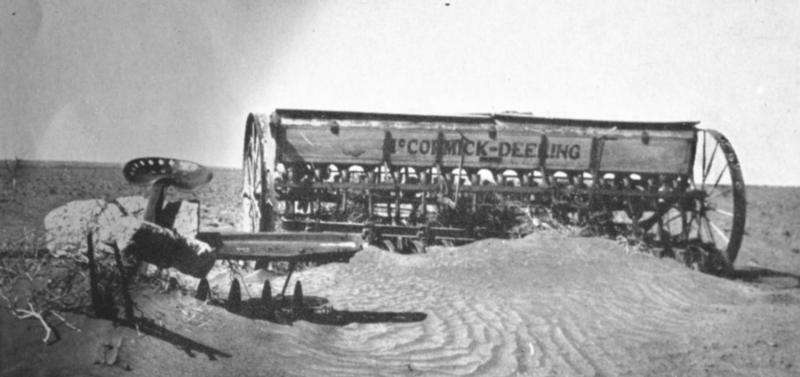New model projects an increase in dust storms in the U.S.

Could the storms that once engulfed the Great Plains in clouds of black dust in the 1930's once again wreak havoc in the U.S.? A new statistical model developed by researchers at Princeton University and the National Oceanic and Atmospheric Administration (NOAA) predicts that climate change will amplify dust activity in parts of the U.S. in the latter half of the 21st century, which may lead to the increased frequency of spectacular dust storms that have far-reaching impacts on public health and infrastructure.
The model, detailed in a study published July 17 in the journal Scientific Reports, eliminates some of the uncertainty found in previous dust activity models by using present-day satellite data such as dust optical depth, which measures to what extent dust particles block sunlight, as well as leafy green coverage over land and other factors.
"Few existing climate models have captured the magnitude and variability of dust across North America," said Bing Pu, the study's lead author and an associate research scholar in the Program in Atmospheric and Oceanic Sciences (AOS), a collaboration between Princeton and NOAA's Geophysical Fluid Dynamics Laboratory (GFDL).
Dust storms happen when wind blows soil particles into the atmosphere. Dust storms are most frequent and destructive in arid climates with loose soil—especially on lands affected by drought and deforestation. Certain regions of the U.S., such as the southwestern deserts and the central plains, are dust-prone. Most importantly, existing climate models predict "unprecedented" dry conditions in the late-21st century due to an increase in greenhouse gases in these very areas.
It is this "perfect storm" of geography and predicted drought and drought-like conditions that led Pu and her colleague Paul Ginoux, a physical scientist at GFDL, to examine the influence of climate change on dust. They analyzed satellite data about the frequency of dust events and the land's leafy green coverage over the contiguous U.S., as well as precipitation and surface wind speed, and reported that climate change will increase dust activity in the southern Great Plains from spring to fall in the late half of the 21st century due to reduced rainfall, increased land surface bareness and increased surface wind speed. Conversely, they predicted reduced dust activity in the northern Great Plains in spring during the same time period due to increased precipitation and increased surface vegetation.
Although it is still unclear if rising temperatures themselves trigger the release of yet more dust into the atmosphere, this research offers a glimpse of what the future might hold. "This is an early attempt to project future changes in dust activity in parts of the United States caused by increasing greenhouse gases," Pu said. Nonetheless, these findings are important given the huge economic and health consequences of severe dust storms, as they can disrupt public transportation systems and trigger respiratory disease epidemics. "Our specific projections may provide an early warning on erosion control, and help improve risk management and resource planning," she said.
The paper, "Projection of American dustiness in the late 21st century due to climate change," was published July 17, 2017 in the journal Scientific Reports.
More information: Bing Pu et al. Projection of American dustiness in the late 21st century due to climate change, Scientific Reports (2017). DOI: 10.1038/s41598-017-05431-9
Journal information: Scientific Reports
Provided by Princeton University


















